Ertach Kernow - Respryn Bridge battle for survival
Respryn Bridge is one of the one of the fine Cornish medieval bridges that still remain important to travelling around Cornwall today.
The river Fowey is one of Cornwall’s most important rivers and the source of great wealth, leading to the establishment of Lostwithiel as a major medieval town. Its value as a river for shipping fell as it gradually silted up over a number of years, but its waters remain an important source of water today, used to fill the reservoirs providing Cornwall’s water supplies. Rising on Bodmin Moor, once called Fowey Moor, the Fowey river has seven tributaries including the largest the River Lerryn. It gradually increases in size so that by the time it reaches the parish of Lanhydrock it’s a fair size.
It is here that one of Cornwall’s finest historic bridges can be found, the much painted and photographed late 14th to early 15th century Respryn Bridge. Readers of ‘Old Cornish Bridges and Streams’, first published in 1928 and written by well-known Cornish historian Charles Henderson and co-author Henry Coates, are given considerable insight into this bridge. They tell readers that there was once a ford there and it was sometimes called Lepryn, originally Rit-brini, thought to mean The Crows Ford. Documentary evidence shows that there was a chapel during the 12th century, pre-dating the bridge, dedicated to St Martin, on the St Winnow side of the crossing. It was common during medieval times for there to be a chapel at river crossings to afford travellers the opportunity to pray for a successful crossing or give thanks for reaching the other side. There was once a small hamlet called Respryn to the north-west of Respryn Bridge on the crossroads. Evidence of this can be seen on the early 19th century Ordnance Survey map of c1813. With the coming of the railway and various road works this was demolished and can no longer be seen on the later 1888 map surveyed in 1881.
During the medieval era, the ford and later constructed bridges lay on the important track between Bodmin and Lostwithiel. Records show that there was a bridge at this point during the 13th Century during the period of Edmund Earl of Cornwall and possibly earlier during the time of his father, Richard Earl of Cornwall, who acquired Restormel Castle. Earl Edmund had died in 1300 and having no surviving children his estate were taken by his cousin King Edward II for the crown. An Inquisition Post-Mortem, established by jury, found that the fishing and other rights in the river belonged to the Lords of Restormel Castle “from St Saviour's Port (Polruan) at the Haven mouth to the Bridge of Reprenne so long as two oxen yoked together could advance there.” This was an important and valuable right given the rivers navigability at that time, as well as other benefits. In 1337 Restormel had passed into the hands of the first Duke of Cornwall, Edward the Black Prince. 1355 saw these fishing rights leased to the burgesses of Lostwithiel for £4 per annum, however by the mid-15th century its value had dropped to a mere 6s. 8d.
Henderson tell us something about the construction of Respryn Bridge. "Resprynn Bridge has five arches of different sizes and dates. The midmost, smallest and oldest is 13 feet in span and dates from at least the 15th century. It is slightly pointed. The other arches are round and the two at the west end are modern. The roadway is 11 feet across and the material of the bridge is principally blocks of moorstone, the newer parts of rubble. The arches spring from the piers without imposts about 5 feet above the normal level of the water.”
Strategically the bridge at Respryn was one of the most important in Cornwall, on the road between Bodmin and the old capital town of Cornwall at Lostwithial, with its Restormel Castle. The castle is one of the dominating features towards the lower Fowey River below which is another historic ford above the medieval bridge at Lostwithiel the lowest bridge on the River Fowey.
The Battle of Lostwithiel fought during the English Civil War, between 21st August and 2nd September 1644, is not a battle that readily springs to mind. Taking place over a period of 13 days along the River Fowey 10,000 Parliamentary forces under the Earl of Essex had entered Cornwall with a view to wresting away Royalist control. Amongst the aims were to cut off supplies of Cornish tin, which was important in helping finance the Royalist war efforts.
"Strategically, the pass at Resprynn Bridge was one of the most important in Cornwall. The bridge was guarded by the Royalists at the outbreak of the Civil War, but when Essex came down to Lostwithiel in July 1644 he put an outpost there. On the night of 11th August, he was obliged to abandon it to the enemy, and as a result King Charles at Boconnoc had free access to Sir Richard Grenville at Bodmin. Lanhydrock House too fell into the hands of the Royalists and their net was drawn the tighter round the doomed Parliamentarian army in Lostwithiel. A few days later the King rode down from Boconnoc to see Lanhydrock, in spite of the wet weather. He rode by way of Resprynn Bridge and did his best to protect the house from the rapacity of his own troops. There is a splendid avenue from the bridge up to Lanhydrock House planted by Lord Roberts after the ultimate victory of his party in the war." (Henderson)
The battle that raged around Lostwithiel was lost by Essex who fled in a fishing boat and was one of the largest defeats for the Parliamentary forces. Along with the historic Restormel Castle and ancient hillfort Castle Dore, Respryn Bridge had played its part.
These historic Cornish medieval bridges are now in a battle for their own survival. Yes, they are loved and appreciated by local people and remain important especially on the minor routes around Cornwall. Sadly, the historic value of many of these is not appreciated by many tourists, drivers of large vehicles and those towing caravans. When trying to drive over them they repeatedly cause damage to their structures. Cornwall Council are fortunately taking action to ensuring that routes over these bridges are better sign posted and increased protection provided.
Recent work at Respryn ensures that larger vehicles of 7’ and over are now unable to access the bridge. Although there have been restrictions of 7.5 tons and 7’ width since 1976 this has often been ignored. In 2006 a 40-ton lorry became stuck on the bridge and caused £30,000 of damage. From an aesthetic view point every effort was made to use local stone to ensure it blended in with the ancient structure.
This is a beautiful area of Cornwall, somewhere interesting for local folk to exercise. For those further away in Cornwall perhaps consider visiting when times allow, with an opportunity to view this historic Cornish bridge.
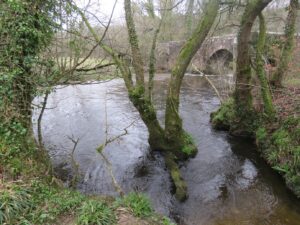
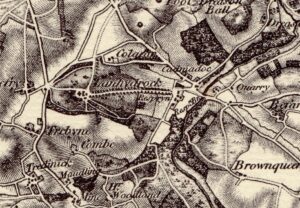
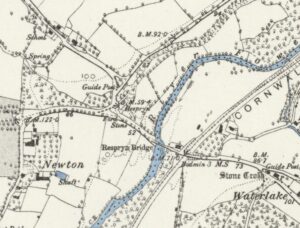
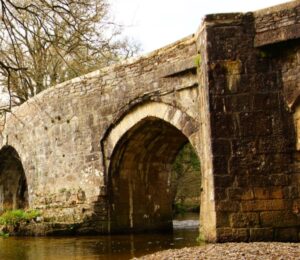
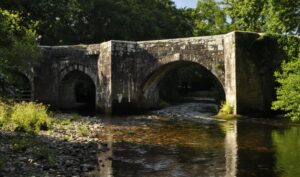
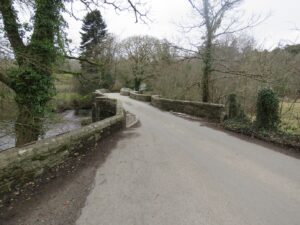
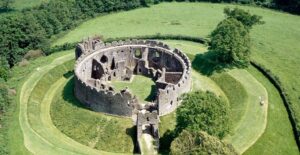
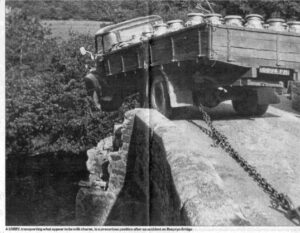
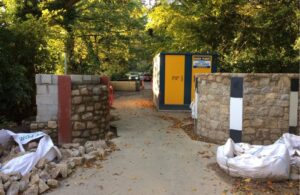
![[33] Voice - Ertach Kernow-100221A - Bridges Battle for Survival [S] Ertach Kernow - Bridges Battle for Survival [Respryn Bridge]](https://www.cornwallheritage.com/wp-content/uploads/2021/02/33-Voice-Ertach-Kernow-100221A-Bridges-Battle-for-Survival-S-238x300.jpg)
![[33] Voice - Ertach Kernow-100221B - Bridges Battle for Survival [S] Ertach Kernow - Bridges Battle for Survival [Respryn Bridge]](https://www.cornwallheritage.com/wp-content/uploads/2021/02/33-Voice-Ertach-Kernow-100221B-Bridges-Battle-for-Survival-S-228x300.jpg)